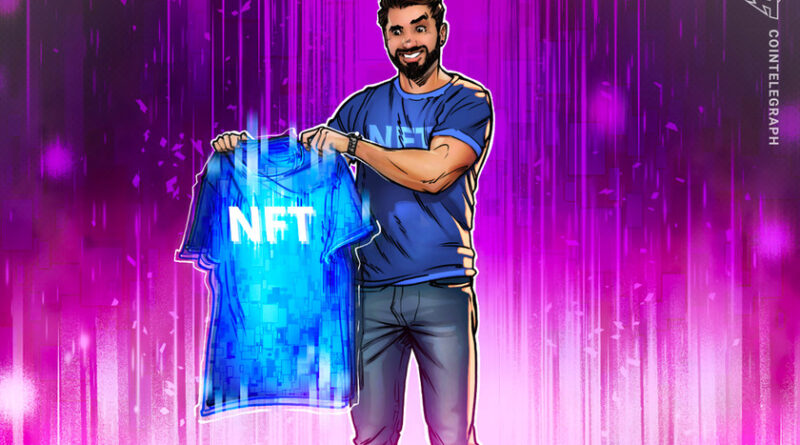What are phygital NFTs, and how do they work?
Discover the unique world of phygital NFTs and how they combine the physical and digital realms to create a new level of ownership and authenticity.
Are phygital NFTs the future?
The world could be tokenized, and NFTs could be the means through which we perform commerce. Could that be the future?
Phygital nonfungible tokens have a strong value add and can be a part of any brand’s community initiatives. Considering the fact they are new, there is a buzz around them that brands can benefit from. With many Web2 incumbents and digital native companies jumping on the bandwagon, phygital NFTs are poised to be a major part of the community and marketing initiatives of companies.
However, the widespread adoption of phygital NFTs will likely depend on the development of practical and cost-effective solutions for storing, tracking and verifying the physical items represented by the NFTs. Additionally, phygital NFTs will also need to compete with conventional NFTs, which offer many of the same benefits without the added complexity and cost associated with tracking physical items.
Moreover, it remains to be seen how these initiatives can scale sustainably and add value to the brands utilizing them. Legal and regulatory frameworks around phygital NFTs also need clarity before phygital nonfungible tokens can become a household phenomenon.
Are phygital NFTs better than conventional NFTs?
Proof of physical presence (PFP) NFTs have been the poster child of the NFT paradigm. Can phygital nonfungible tokens dethrone the king by virtue of their utility?
The PFP NFT acts as a certificate of authenticity, enabling the owner to prove that they own a unique, one-of-a-kind item, and can be used to verify the authenticity and ownership of physical items in the same way that traditional NFTs are used to verify the authenticity and ownership of digital assets.
Their value depends on demand and the utility around the NFT. While phygital NFTs also bring a physical touchpoint to the digital realm, the value of an NFT and its worth are contingent on a multitude of other factors, not to mention the appeal of the art.
So, it’s difficult to say that phygital nonfungible tokens are better than conventional NFTs. Both have their advantages and disadvantages, and the ideal solution may depend on the item being monetized and the intended use of the NFT. However, phygital NFTs promise to be the bridge between the digital and brick-and-mortar world. They are also bridging Web2 brands with Web3 fundamentals.
What are the advantages of phygital NFTs?
On top of the community experience, phygital NFTs also help build traceability into a product that is being sold to a customer. The history of the product and its providence can add credibility and commercial value to a physical good.
Community experience is just one big use case of phygital NFTs. Considering nonfungible tokens are authentic and tamper-proof, any person buying phygital NFTs can trace the evolution of the goods they buy right from the person who purchased them first. This helps build authenticity and trust, one of the cornerstones of economic transactions.
Thanks to traceability, phygital NFTs can also help with countering counterfeit products in the market, leading to original goods being sold. Finally, phygital nonfungible tokens create more collaboration and are a means for artists to monetize their skills. For instance, artists can monetize their work on Felt Zine by collaborating with a brand, such as Givenchy, to create branded content for the brand’s advertising and marketing campaigns.
This may entail producing fresh photographs, artwork or other visual materials that highlight the Givenchy brand or products. The artist may be compensated for their work in the form of a fee, royalties or a cut of sales proceeds from any products that incorporate their work. The artist may also gain visibility and acknowledgement for their work, which can strengthen their personal brand and attract new business opportunities for them to profit from their art.
This new technology has unearthed a few ways of collaboration across creators, developers, brands and their consumers using Web3 design fundamentals.
How do different brands use phygital NFTs?
Being a nascent technology, brands are still just scratching the surface for use cases for phygital experiences. However, phygital NFTs could be a way to token-gate a community, create an incentive mechanism and a brand identity, and as a result, can help with user retention. Brands have used them for many of these purposes so far.
There are multiple ways that brands enable phygital activations. One of the ways that brands create phygital experiences is by asking users to buy the NFT and then nudging them to burn it for access to physical goods or experiences. An example of this is the Nouns Vision project.
Another strategy is providing access to an alternative nonfungible token upon burning. There are also in-store NFT activations where customers collect an NFT once they have purchased a real-world product or service. Brands use these nonfungible tokens to offer targeted community experiences. These experiences provide customers with a sense of belonging, proving to be vital in retention and further acquisition.
Physical NFTs are also being used by gaming companies to provide new gaming experiences and to honor players for their accomplishments. For instance, a gaming corporation might let users buy and sell distinctive phygital NFTs that depict the characters, goods or weapons they use in-game.
These are just a few instances of how various brands are utilizing phygital NFTs to provide their clients with fresh and inventive experiences. Future applications of phygital nonfungible tokens are likely to be even more creative as this technology develops.
What industries will benefit from phygital NFTs?
With several Web2 brands wanting to create closely knit communities, industry use cases for phygital NFTs are limited only by imagination.
Nonfungible tokens are truly industry agnostic. Most industries could create seamless community experiences using phygital NFTs that could have strong brand recognition and recall effects. However, brands that have embraced this paradigm have been in the luxury, fashion, food and beverages, wearables, entertainment and even fast-moving consumer goods sectors.
Here are some brands that have tapped into phygital NFTs to engage with their communities:
- Starbucks Odyssey
- Timex and the Bored Ape Yacht Club
- The Whiskey Barrel, an online whiskey platform
- Bstroy x Givenchy phygital experiences
- Cult and Rain.
The above-mentioned examples are a small subset of a host of brands that have adopted phygital experiences, clearly validating the movement of companies toward phygital experiences and phygital NFTs.
What does phygital NFT mean in crypto?
Phygital NFTs go beyond just the virtual use cases of NFTs and connect real-world products to the virtual world while relying on Web3 design principles.
The world is moving toward an experience economy focused on communities. As more businesses enter markets to serve their customers, one of the key distinguishing factors that could create a meaningful impact from a customer’s point of view is a community experience.
Phygital nonfungible tokens (NFTs), an amalgamation of physical and digital nonfungible tokens, enable community experiences as brick-and-mortar businesses look to engage with their customers through NFTs.
Phygital NFTs allow buying and selling real-world physical goods and experiences through digital collectibles or NFTs. As collectors of phygital NFTs grow and thrive, they start identifying themselves as being part of a tribe, thereby increasing customer retention for the business.
Phygital NFTs do not necessarily rely on native Web3 communities. For instance, NFT communities on Ethereum and Solana often rely on native users of these blockchains that the NFT is created on. However, communities around phygital NFTs can be blockchain agnostic and focus on the brand that they feel an affinity to.




